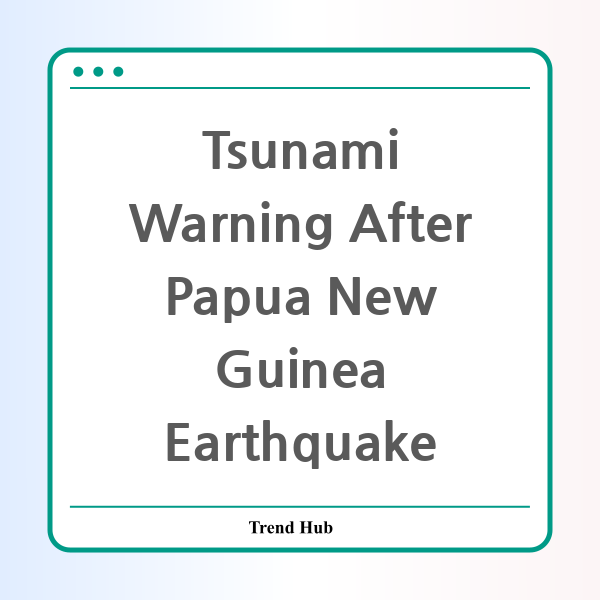* This website participates in the Amazon Affiliate Program and earns from qualifying purchases.

Did you feel the earth shake? A powerful 6.9 magnitude earthquake struck near Papua New Guinea early on a Saturday morning, sending shockwaves through the region and prompting a tsunami warning for its coastal areas. The U.S. Geological Survey (USGS) reported that the earthquake's epicenter was located 194 kilometers southeast of Kimbe, the capital of West New Britain province. This event highlights the ongoing seismic activity in the area and serves as a reminder of the potential dangers posed by natural disasters.
The earthquake occurred at a shallow depth of just six miles, which can significantly increase the likelihood of damage and is often more perceptible to those living nearby. Following the quake, aftershocks ensued, with the strongest recorded at 5.3 magnitude, adding to the concerns of residents who might still be shaken by the initial tremor.
In response to the quake, the U.S. Tsunami Warning Center issued a warning indicating hazardous tsunami waves could affect some coasts in Papua New Guinea. The initial forecasts suggested waves could reach heights between one to three meters, a significant threat to coastal communities. Fortunately, this tsunami alert was rescinded later in the evening, with authorities confirming that the immediate threat had passed.
For nearby regions such as the Solomon Islands, there was also a caution of possible wave heights of up to 0.3 meters. As the dust settles from this seismic event, it is crucial to consider the preparedness and safety measures in place for the local populations. Thankfully, as of the latest updates, there have been no immediate reports of injuries or property damage, yet the incident serves as a stark reminder of the geological volatility of the region.
Located along the Pacific "Ring of Fire," Papua New Guinea is part of a seismically active zone known for frequent earthquakes and volcanic eruptions. This zone spans nearly 25,000 miles and is notorious for its geophysical activity. Countries encompassed by this region, including Japan, Indonesia, and New Zealand, regularly experience the effects of tectonic shifts, making disaster readiness essential for millions of residents.
The Ring of Fire is home to approximately 75% of the world's active volcanoes and around 90% of all earthquakes. The pressure created by the constant movement and interaction of tectonic plates often results in catastrophic natural events, yet the region's fertile lands and abundant resources continue to attract and sustain large populations.
In conclusion, the recent earthquake and tsunami threat serve as a critical reminder of the importance of emergency preparedness and community resilience in the face of natural disasters. As global climate change continues to influence weather patterns and geological activity, it is vital to remain aware of the risks associated with living in such seismically active areas. Local governments, organizations, and communities must work together to develop robust disaster response strategies, ensuring that if the ground quakes again, residents will be ready.
* This website participates in the Amazon Affiliate Program and earns from qualifying purchases.